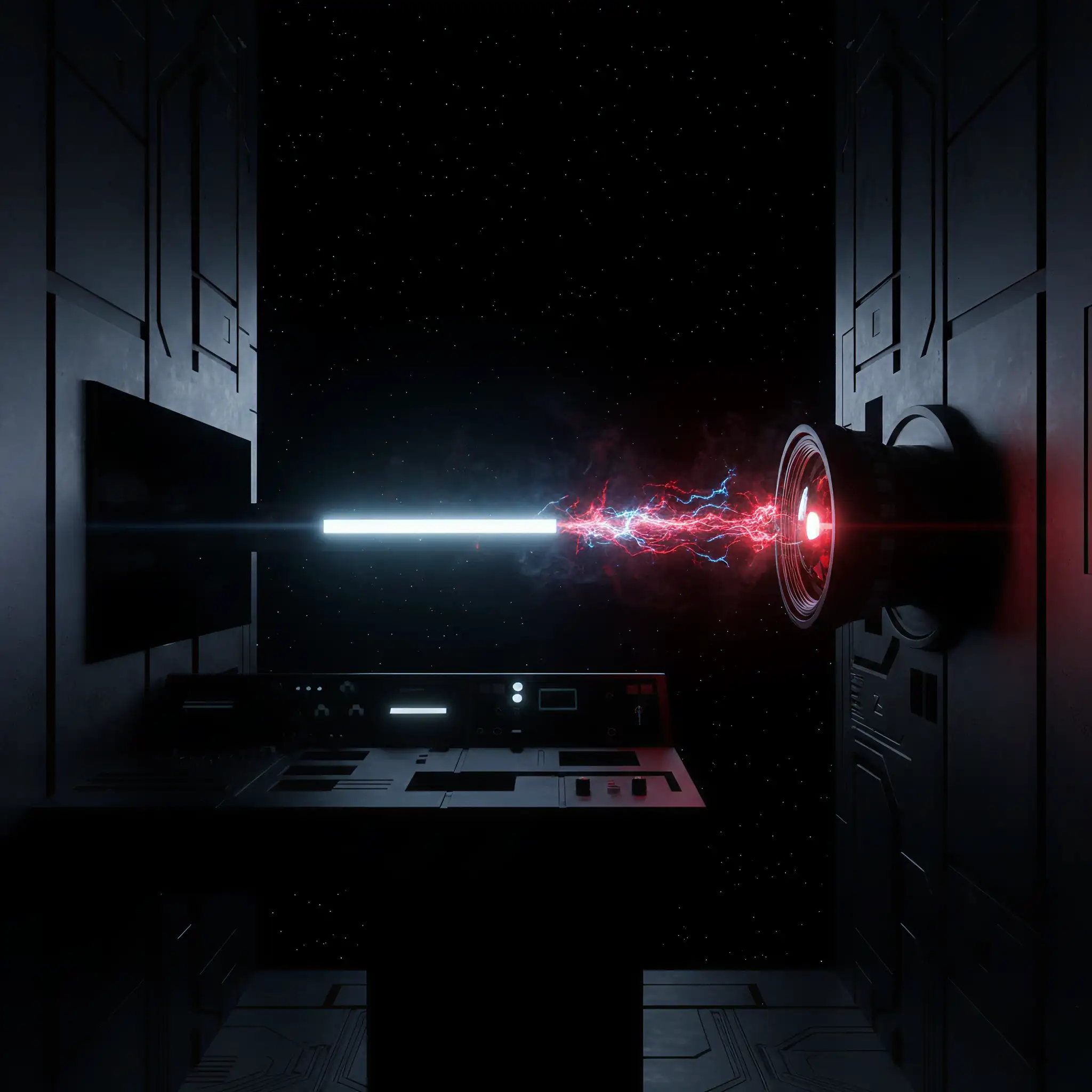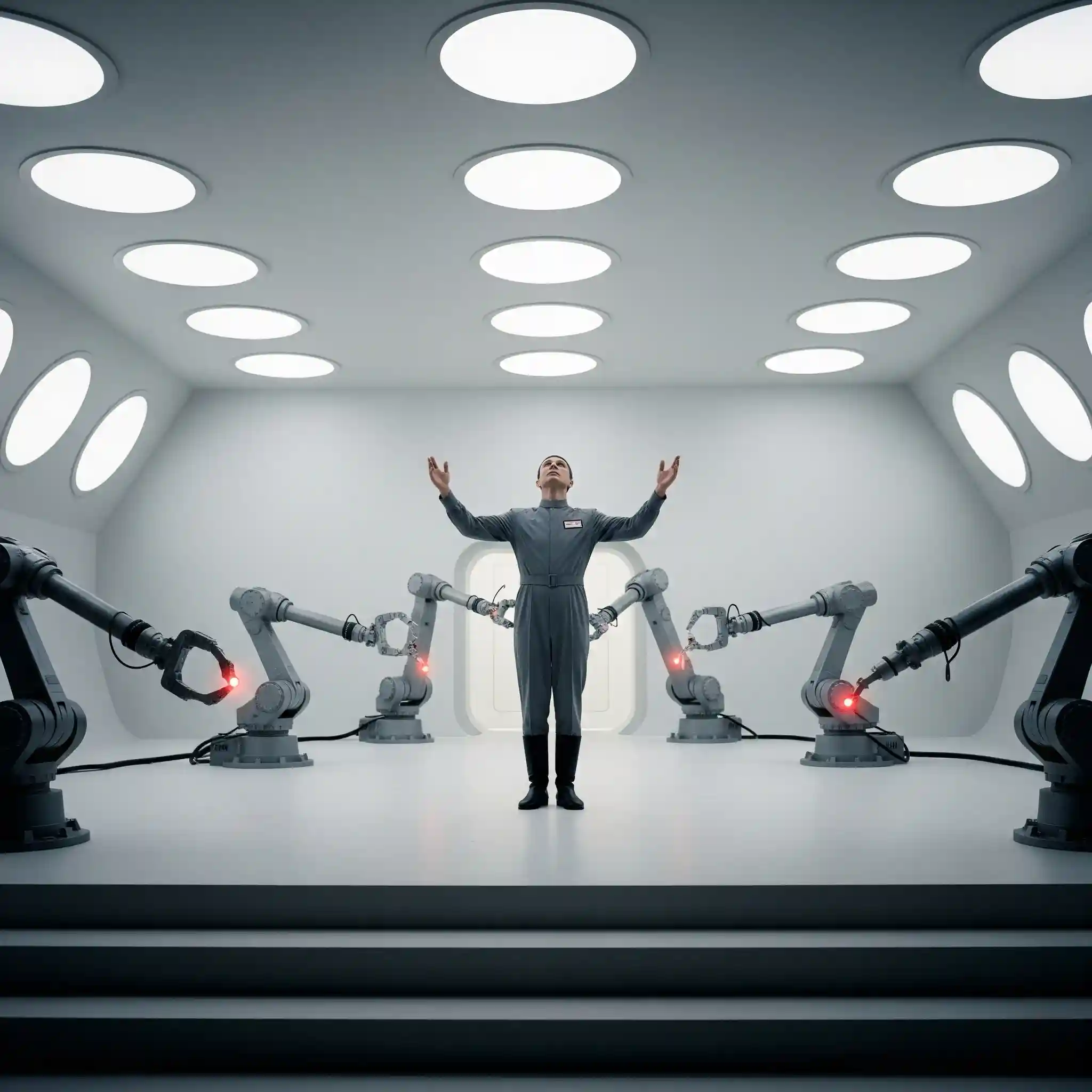Manufacturing quality is undergoing a dramatic transformation in 2025. With machine vision systems market projections showing growth from USD 20.4 billion in 2024 and to a projected USD 41.7 billion by 2030 at an 13% CAGR, and artificial intelligence revolutionizing defect detection, choosing the right system has never been more critical—or more complex.
Traditional manual visual inspection simply can't keep pace with modern production lines demands. Today's manufacturers need intelligent machine vision systems that can detect micro-defects, adapt to product variations, and integrate seamlessly with existing industrial automation—all while delivering consistent results at high speeds.
Who This Guide Is For
This comprehensive comparison is designed for manufacturing engineers, plant managers, and automation specialists evaluating machine vision systems solutions. Whether you're replacing manual inspection processes, upgrading legacy equipment, or implementing machine vision technology for the first time, this guide provides practical insights to match vendor capabilities with your specific manufacturing requirements and reduce costs while improving efficiency across your operations.
Disclaimer: The references to software features, capabilities, and vendor information were valid at the time of writing this article but could be subject to change in the future. Contact vendors directly for current pricing, specifications, and availability.
What to Look for in a Machine Vision Vendor
Benefits of Machine Vision Systems
Improved Product Quality: Machine vision systems enhance inspection speed and accuracy, identifying defects before products reach packaging or shipment. This reduces recalls and protects brand reputation. With over 90% fewer inspection errors and up to 95% lower defect rates, they free up human inspectors to focus on edge cases requiring judgment.
Increased Productivity and OEE: Unlike human inspectors, machine vision systems operate continuously without fatigue. They accelerate cycle times and provide real-time data for optimizing equipment utilization. Some systems inspect up to 2,400 parts per minute, directly boosting OEE.
Reduced Waste and Scrap Rates: By detecting overfill, flaws, and defect patterns early, machine vision cuts waste and raw material costs. Root causes can be identified before costly issues multiply.
Enhanced Traceability and Compliance: These systems read and record product codes throughout production, ensuring supply chain visibility and regulatory traceability. In sectors like pharma and automotive, the data also supports audit readiness.
Overcoming Labor Shortages: Machine vision automates repetitive inspection tasks, helping manufacturers reallocate skilled labor to higher-value work amid staffing challenges.
Continuous Process Improvement: Real-time visual data exposes process drift, machine wear, and recurring issues—enabling proactive optimization. It turns inspection into a strategic driver of efficiency, intelligence, and compliance.
Critical Evaluation Criteria
Technical Capabilities: Core system components—cameras, sensors, lighting, and software—determine inspection quality. Look for software that supports fast iteration, deep learning, and robust performance under variable lighting and orientation. A range of camera types (2D, 3D, thermal, color) and lighting technologies (e.g., dynamic or multi-spectrum lighting) ensures flexibility for diverse inspection needs. Systems should also support high-speed processors and be compatible with digital imaging standards for seamless integration.
Performance Metrics: Speed, accuracy, and reliability are essential. Leading systems reduce errors by up to 90% and support throughput in the tens of thousands of parts per hour. AI-driven systems can reduce dependency on labeled data while maintaining high accuracy. Structured metrics like precision and recall help benchmark results.
Scalability & Integration: Vision systems must scale with production demands and integrate with factory infrastructure (PLCs, MES, SCADA, ERP). Open standards and middleware ease connectivity with legacy equipment. Customization is also key—adaptable software and flexible programming support evolving inspection tasks.
Total Cost of Ownership (TCO) & ROI: Beyond upfront costs, consider training, integration, and maintenance. High-end systems can deliver fast ROI via labor savings, waste reduction, and improved quality—often exceeding 75% return in year one.
Usability & Support: Fast setup, intuitive interfaces, and strong vendor support minimize downtime and reduce the need for specialized personnel—key for sustainable deployment.
Top 6 Machine Vision Vendors: Detailed Analysis
1. Elementary
Elementary represents the newest generation of machine vision systems, built from the ground up with advanced machine learning that eliminates traditional deployment complexity through self-training artificial intelligence.
Key Capabilities:
- VisionStream AI: Self-training system that learns product quality standards automatically without manual image labeling, using deep learning to analyze images
- QualityOS Platform: Cloud-based factory-wide visibility with complete traceability and business system integration across production lines
- Hardware Components: Radian cameras (high-resolution sensors in waterproof enclosures), Shroud (integrated camera/lens/light assembly), Vertex (AI controller supporting up to 8 sensors), and Node (DIN rail-mounted controller for OEM integration)
- VisionLink: Universal camera integration via FTP, adding AI-powered inspection to any vision system, including line scan, microscope, x-ray, hyperspectral, thermal, and area scan
- Rapid Deployment: Compatible with existing manufacturing equipment and industrial automation infrastructure
Why Choose Elementary: Self-supervised learning eliminates the need for specialized vision engineers or extensive training data, directly addressing the skilled labor shortage that challenges many manufacturers. The system adapts to new products automatically, making it suitable for high-mix manufacturing environments requiring quick decision making and quality control.
Best For: Manufacturing facilities with limited expertise, rapid deployment scenarios, multi-site operations requiring centralized quality management, and applications demanding 100% traceability with benefits of machine vision implementation.
2. Keyence
Keyence is widely praised for ease of use and quick setup, making it particularly suitable for teams with less machine vision experience. Their comprehensive local support and benefits of machine vision training set them apart in the manufacturing industry.
Key Capabilities:
- VS Series: Vision sensors with built-in AI, optical zoom function, and automated part detection capabilities
- CV-X Series: Intuitive, user-friendly system with high-speed cameras for various manufacturing settings
- XG-X Series: Customizable advanced imaging with flowchart-style programming for complex applications
- LumiTrax™ and Multi-Spectrum: Dynamic lighting technologies for high-contrast imaging on challenging surfaces
Why Choose Keyence: Good user experience with quick deployment and comprehensive local support. Less customizable than some alternatives, requiring adaptation to their workflow rather than custom configuration for specific manufacturing needs.
Best For: Teams with less machine vision experience, simple to moderately complex applications, operations prioritizing comprehensive local support, high-resolution imaging needs across production lines.
3. Cognex
Cognex remains the market leader with the most comprehensive tool library, offering mature, field-tested machine vision systems built over decades of industry experience. Their extensive portfolio of pre-built vision tools and spreadsheet-based interface are particularly valued by engineers familiar with Excel-style programming.
Key Capabilities:
- Comprehensive Tool Library: Extensive collection of pre-built vision tools for measurement, alignment, identification, guidance, and inspection tasks across diverse applications
- In-Sight Series: Smart cameras including In-Sight D900 (embedded AI), In-Sight 2800 (advanced AI package), and In-Sight L38 (AI-powered 3D vision system)
- VisionPro: PC-based vision software providing ultimate control and deep customization for challenging applications
- DataMan: Barcode readers with built-in AI for enhanced positioning and decoding across various industrial environments
Why Choose Cognex: Proven track record with the industry's most comprehensive collection of vision tools, enabling solutions for virtually any inspection challenge. Offers both no-code GUI options and advanced programming flexibility backed by decades of development. However, expect premium pricing and a learning curve.
Best For: Applications requiring proven, mature vision tools, diverse inspection requirements across multiple product lines, teams needing extensive customization options, and manufacturers prioritizing established technology with comprehensive support ecosystems.
4. Zebra
Zebra is a newer entrant to core machine vision systems but brings strong expertise from enterprise asset intelligence. Their focus is primarily on fixed industrial scanning and OCR applications where they are an industry leader in manufacturing environments.
Key Capabilities:
- Zebra Aurora: Unified software platform for simple setup and deployment of all industrial vision systems
- Fixed Industrial Scanners: Specialized solutions for track-and-trace applications in production and fulfillment
- Aurora Vision Deep Learning: Advanced image analysis software for anomaly detection and OCR capabilities
- Matrox Imaging Integration: Smart cameras, 3D sensors, and vision controllers for robotic guidance applications
Why Choose Zebra: Suitable for fixed scanning and OCR applications, particularly when integrating with other Zebra enterprise equipment. Less extensive portfolio for complex vision tasks compared to established leaders but provides solid benefits of machine vision for specific applications.
Best For: Fixed industrial scanning and basic inspection, organizations already using Zebra enterprise systems, OCR and identification applications, quick setup requirements for straightforward vision tasks in manufacturing.
5. Omron
Omron positions itself as a total solution provider, offering complete integration of machine vision systems, machine vision software, controllers, and robotic solutions through their Sysmac Studio ecosystem for manufacturing operations.
Key Capabilities:
- FH-Series Vision System: High-speed image processing with 21-megapixel cameras and industry-leading processing speeds
- Multi-Direction Multi-Color (MDMC) Light: Advanced lighting technology that flexibly changes colors and angles to detect subtle defects
- Sysmac Studio: Unified development environment for complete automation integration
- 3D Bin-Picking Solutions: Integrated robotic guidance for seamless workflow integration
Why Choose Omron: Best value when part of broader Omron automation ecosystem. Some user feedback indicates challenges compared to established leaders for certain applications, but excels in integrated manufacturing environments.
Best For: Existing Omron automation users, applications requiring comprehensive solutions with cameras and controllers, manufacturing environments needing robust communication, teams with technical expertise for machine learning implementations.
6. Teledyne DALSA
Teledyne DALSA stands out with specialized expertise in high-performance digital imaging across a broad spectrum, from visible light to infrared and X-ray. The parent company’s acquisition of FLIR further enhances thermal imaging capabilities, offering a comprehensive portfolio of components and systems for demanding applications.
Key Capabilities:
- Broad Spectrum Imaging: Comprehensive capabilities across visible, deep infrared, extreme UV, and X-ray frequencies, with enhanced thermal imaging from FLIR acquisition
- Extensive Product Portfolio: High-performance CMOS and CCD sensors, area scan and line scan cameras (DALSA Linea, Linea HS2, Genie Nano), 3D sensors, and smart cameras
- Advanced AI Tools: Code-free Astrocyte™ AI Tool for neural network training and Firefly DL cameras with Neuro technology for on-camera decision-making
- Ultra-High Performance: Linea HS2 offers 16K TDI line scan cameras with 1 MHz line rates for the most demanding speed requirements
Why Choose Teledyne DALSA: Applications demanding ultra-high resolution, multi-spectral analysis, and complex defect detection in challenging environments like semiconductors, electronics, and medical devices. Their comprehensive component portfolio and custom solution capabilities serve the most demanding manufacturing applications.
Best For: Ultra-high resolution inspection, multi-spectral imaging including thermal and X-ray, complex AI-driven defect detection in semiconductors and electronics, medical device manufacturing, and custom imaging solutions for demanding industrial environments.
Side-by-Side Comparison
| Feature/Vendor |
Elementary |
Cognex |
Keyence |
Omron |
Zebra |
Teledyne DALSA |
| Primary Differentiator |
Self-training AI, Rapid Deployment |
Comprehensive tool library, Mature ecosystem |
Multi-disciplinary automation |
Unified control / vision platform |
Barcode scanning |
Broad spectrum imaging |
| AI Integration |
Core to VisionStream (self-training, no labeled data) |
Embedded AI in In-Sight D900, 2800, L38, DataMan |
VS series with built-in AI, AI tools in CV-X |
FH-Series AI for defect recognition, human-like sensitivity |
Deep Learning for OCR, anomaly detection |
AI tools (Astrocyte, Firefly DL) |
| Ease of Deployment/Use |
80x faster deployment, <60s auto-training, no experts needed |
Easy-to-use packages (In-Sight 2800), EasyBuilder interface |
Rapid solutions, simple software, intuitive interface |
User-friendly FH-Series, Sysmac Studio integration |
Simple setup and deployment via Zebra Aurora |
Medium (code-free AI tools simplify) |
| Key Applications |
Defect detection, label verification, presence/absence, classification, traceability, quality escapes |
Diverse inspection tasks, measurement, guidance, barcode reading |
Multi-disciplinary automation, measurement, robot guidance |
Quality inspection, measurement, color detection, code reading, robotic bin-picking |
Traceability, quality inspection, OCR, robotic guidance |
Factory automation, quality inspection, NDT, medical, aerospace |
| Thermal/Multispectral |
Integration with any 3rd-party camera |
Standard vision |
Standard vision |
Standard vision |
Standard vision |
Comprehensive (IR, X-ray, multi-spectral) |
| Integration |
Cloud + standard |
Standard protocols |
Standard protocols |
Native integration |
Standard protocols |
Engineering required |
Key Takeaways and Recommendations
For Most Manufacturing Operations: Elementary offers the most accessible path to advanced machine vision technology with self-training artificial intelligence that eliminates traditional barriers. Ideal for rapid deployment without specialized expertise while delivering benefits of machine vision implementation.
For Complex Applications: Cognex remains the market leader with proven machine vision capabilities for highly complex inspections, robotic guidance, and custom solutions. Expect premium pricing but unmatched flexibility for challenging manufacturing requirements.
For Premium Customer Experience: Keyence excels in delivering exceptional user interfaces, comprehensive local support, and training programs, making it perfect for teams seeking high-quality traditional machine vision with superior customer service across production lines.
For Omron Ecosystem Users: Omron provides the best integrated solution when part of a broader automation ecosystem, offering total solution benefits through Sysmac Studio for comprehensive manufacturing operations.
For Specialized Imaging: Teledyne DALSA is the leader for multi-spectral imaging and ultra-high resolution applications where standard machine vision systems cannot meet requirements, offering comprehensive capabilities from visible to X-ray frequencies.
For Enterprise Scanning: Zebra leads in fixed industrial scanning and OCR applications, particularly valuable when integrating with existing Zebra enterprise equipment for quality control and part identification.
The key to success lies in matching vendor strengths with your specific manufacturing requirements: complexity level, existing automation infrastructure, team expertise, and long-term scalability needs. Consider ambient light conditions, required accuracy levels, and integration with your current manufacturing process when making your decision to reduce costs and improve efficiency.
Frequently Asked Questions
What is the best machine vision system for defect detection in manufacturing?
For most manufacturers, Elementary offers the best combination of ease and sophistication with self-training AI that requires no labeled data. Cognex provides a comprehensive tool library with extensive pre-built vision capabilities, while Keyence excels with multi-disciplinary strength combining advanced sensors, measurement tools, and automation beyond just vision. The best choice depends on your specific application requirements and existing infrastructure.
How do Cognex, Keyence, and Elementary compare?
Elementary offers the fastest deployment with self-training AI, Cognex provides a comprehensive tool library with extensive pre-built vision capabilities for diverse applications, and Keyence delivers multi-disciplinary strength combining vision with advanced sensors and automation expertise. Elementary is ideal for rapid AI adoption, Cognex for leveraging extensive proven tools, and Keyence for complex automation solutions.
Which machine vision vendors offer AI-based inspection?
All major vendors now offer AI capabilities: Elementary leads with self-training artificial intelligence, Cognex provides mature deep learning through VisionPro and ViDi tools, Keyence offers pre-trained AI models in their IV2 series, Omron integrates AI into their FH Vision systems, and Teledyne DALSA provides code-free Astrocyte™ AI tools and Firefly DL cameras. Elementary requires the least AI expertise to implement.
What industries use machine vision systems the most?
Automotive, electronics, pharmaceuticals, food & beverage, and consumer goods are the top adopters. Automotive uses machine vision for part inspection and assembly verification, electronics for PCB inspection, pharmaceuticals for packaging compliance, food & beverage for quality and safety, and consumer goods for packaging and labeling verification.
How much does a machine vision system cost?
Machine vision systems typically range from $15,000-$50,000 for basic installations to $100,000+ for complex multi-camera setups. Costs depend on camera specifications, software complexity, and integration requirements. Most systems achieve ROI within 6-18 months through reduced labor costs, improved quality, and decreased scrap rates.
Can machine vision replace human inspectors?
Machine vision systems can replace human inspectors for many repetitive visual inspection tasks, offering 24/7 operation, consistent accuracy, and elimination of human error. They excel at detecting micro-defects and maintaining quality standards. However, humans remain valuable for complex decision-making, setup, and handling exceptions that require judgment.
What's the easiest machine vision system to deploy?
Elementary offers the easiest deployment with self-training AI that learns automatically without programming, labeled data, or specialized expertise. Keyence provides excellent ease of use for traditional machine vision with industry-leading user interfaces, one-click setup features, and comprehensive local support. Both minimize technical complexity, but Elementary's breakthrough approach eliminates traditional setup barriers entirely.
Do I need labeled data to train a machine vision system?
Traditional machine vision systems require labeled training data, but Elementary's breakthrough self-training AI learns from production without labeled data. Cognex and other vendors typically need extensive image labeling and model training. Elementary eliminates this bottleneck, making AI deployment 80x faster according to their claims.
What are the top features to look for in a machine vision platform?
Key features include ease of setup, AI/machine learning capabilities, integration with existing automation, scalability across production lines, comprehensive support, and flexibility for different product types. Depending on your machine vision application, consider whether you need 3D vision, specialized lighting, thermal imaging, or specific communication protocols for your manufacturing environment.
What is the difference between machine vision and computer vision?
Machine vision specifically refers to industrial inspection and automation applications in manufacturing settings, while computer vision is the broader field of enabling computers to interpret visual information. Machine vision systems are purpose-built for production lines, quality control, and industrial automation, whereas computer vision encompasses applications from facial recognition to autonomous vehicles.
Ready to Implement Machine Vision?
Get Started Today: Contact 2-3 vendors that align with your requirements for demonstrations using your actual products. Most vendors offer pilot programs to test systems in your production environment before full deployment.
Schedule a Consultation: Our vision specialists are ready to discuss your specific needs and give you a personalized recommendation.




